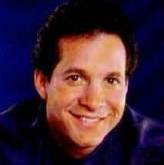Opening titles of Lewis Milestone’s ALL QUIET ON THE WESTERN FRONT (1930)
"The rush of battle is a potent and often lethal addiction, for war is a drug."
Opening quotation of Kathryn Bigelow’s THE HURT LOCKER (2009) c/o Chris Hedges, “War Is a Force That Gives Us Meaning”
Why do I go to the movies? For the length of time it takes for my bladder to hold out (Hitchcock was onto something there), the movie theatre seems an opportune place I can patronize to release the stresses of my day and/or escape from reality. Images flashed onscreen from the projector overhead complemented by sounds emanating from the corners of the enclosed screening quarters can trigger earlier thoughts or convictions I may have had that are manipulated by characters and shapes as they wriggle and bend through beams of light on the vinyl screen before me. This experience can be a place of negativity or something completely positive and escapist. I suppose that once I select a comfortable cushioned chair to sit on after passing through a threshold of double-doors as an aroma of warm-buttered popcorn and stale nacho cheese sauce fills my nostrils, I feel like I’m in my very own hurt locker.
Why do soldiers go to war in the movies? Most films in the War genre tend to serve up eternal conundrums that go unanswered not because there’s a specific reason why one fights - - it could be for the sake of pride for one’s country, to uphold security, for reasons only they themselves know - - but probably because it is something more elusive than that. Is it the thrill of victory; are soldiers in it to win it? Or is success to win dependent on the desire to get out with one’s own skin when staring death in the face?
Enter Staff Sergeant William James (Jeremy Renner): James is somewhat like George Steven’s “Shane” in the way he’s able to easily ingratiate himself into Bravo Company than he is fresh meat for the grinder. And like Alan Ladd’s titular character, he expresses a weariness as if he’d just been intensely and emotionally drained by some (or a series of) disaster(s), while exuding a cool detachment against life’s trivialities. Just as Shane’s origin is unexplained, from where exactly does James hail? James takes command of the Explosive Ordnance Disposal (EOD) squad with his new team members Sergeant JT Sanborn (Anthony Mackie) and Specialist Owen Eldridge (Brian Geraghty) after their Staff Sergeant, Matt Thompson (Guy Pearce), is regrettably killed by a ‘roadside bomb’ in an excitedly explosive scene unleashed in the first ten minutes of Kathryn Bigelow’s THE HURT LOCKER. That Thompson’s orthodox approach to bomb disposal is procedurally by-the-book, James’ methods are otherwise employed with controlled abandon complemented by a hint of adrenaline abuse. His teammates are not happy.
Upon their initial meeting, Sanborn quips to James that the name of their Camp recently changed names from Liberty to Victory. Unable to sense sarcasm and immune to healthy human interaction, James isn’t aware of the joke because he harbors an obsession with disarming bombs that gives him a veneer of militaristic Teflon. Generically, the film as a film of War is a façade, as SHANE is not a Western so much as it is a Dramatic parable. THE HURT LOCKER is more reminiscent of a Detective film: where an exploded bomb and its accompaniment of aimless confetti-like shrapnel or a bullet emptied from a sniper rifle will not only send one to the hurt locker, but to “The Big Sleep” and as James evokes Humphrey Bogart’s Philip Marlowe, Sam Spade or in this case, Sam Grenade, he is tasked with disarming a series of elaborately-designed, inanimate exploding devices utilizing complex facilities of deduction.
James feeds his craving for adrenaline by disarming bombs and keeping the inactive detonators in his footlocker as a reminder of what may have destroyed him. Is it really James then, that’s detonating the bomb, or is it the bomb - - which tests him each time - - that is slowly disarming James and his crew to the point of sending them to oblivion? The bombs resemble human machinery complete with wires, cogs, colors, wheels and a battery, like a beating human heart. The characters are just as hollow as these bombs. Eldridge, the one soldier who shows an affection for his therapist shares the only visible attempt at connection with another human being and the boy’s doctor, like clockwork, is predictably destroyed thereby re-leveling the playing field.
Featured in the film is a third-person shooter video game played by one of the soldiers: “Gears of War” which connotes the iconic image of Charlie Chaplin caught in the gears of the mega corporation as he struggles to survive the harsh world of Industrialization. James, Sanborn and Eldridge are also each cogs in the machine of war who are a few rungs above the common grunt in the way they use their wits to disarm nasty little bombs which hold immediate invitations to their respective demise. Unlike the subdued propaganda of War in Milestone’s ALL QUIET ON THE WESTERN FRONT, Bigelow’s vision of War as a drug (as is seen in so many contemporary television-commercial and video game PR in their exhibition of soldier-turned-instant-hero set against a choir of alto and soprano voices accompanied by heavy metal music-stylings and unsheathed silver rapiers in overblown CGI visuals tinted with red, white and blue) is unsavory exploitation of human life. Milestone’s classic at least makes the bitter pill of war easier to swallow by labeling the new schoolboy recruits “fresh from the turnip patch”. If we have learned anything from the War classics, War is Hell … Quiet … Solitary … Dirty … and wrought with anxious anticipation. Conversely, James’ War is reckless, wild, and epitomized by revolt; he is a charming, poster-boy rebel (James Dean parallel?) construct of the New War who relaxes to heavy metal music and showers in his gear and military fatigues. In a world overflowing with prescription drugs, painkillers and various narcotics, it’s easy to reduce War to a lethal drug (or a bumper sticker) that chooses in whose veins it will rush. I like to think that survival instincts are what pump and pulsate through one’s bloodstream and brainwaves. The threat of War instigates survival and is an exterior entity that can be equally welcomed or ignored by any candidate so willing to engage in or avoid it. Survival is everlasting so long as you continue to breathe and heightens when an element of risk appears.
Thematic ideas take precedence over filmmaking technique in THE HURT LOCKER which for the most part is hollow and clichéd. Apart from the stylized slow-motion photography of rubble levitating from the sun-baked earth triggered by massive explosions, the film’s you are there shaky camerawork leaves little to be desired. The sniper sequence is nearly devoid of suspense and trades nominal dialogue for (what felt like) a quarter of an hour of cinematic boredom which begged me to ask myself, “did they just run out of a screenplay”? The sensitive guiding of the sniper battle in Stanley Kubrick’s FULL METAL JACKET was far more inventive and inducive of the onset of grey hairs.
The film unfolds like an ambling version of Henri-Georges Clouzot’s white-knuckle WAGES OF FEAR on foot that isn’t as suspenseful and is literally a pedestrian effort. If at least one of the bombs that James was disarming went off, I would’ve been slightly more intrigued - - even Bogie’s gumshoes were occasionally battered and bruised by his nemeses.
Once James returns home to his family, domestic life mirrors scenes reminiscent of the cold, barren environment of Andrei Tarkovsky’s SOLARIS. The atmosphere is stagnant. Never has a supermarket and its patrons seemed less alive. Compared to the environs of Iraq, James’ hometown belongs six feet under ground (that is, if you could actually level an entire city; see 2012). With a dead world that’s wet, somber and abysmal where James seems utterly out of place, this last entry in the film felt as if there could have been more potential to be even emptier. James is depicted as a consumerist drone and slave to domesticity, although what’s lacking is the necessary ingredient of what his life before wartime was really like. When given the opportunity to explain to Sanborn why he chooses to fight, he literally shrugs off the question - - a microbe of a hint would've been perfectly acceptable. It’s in Iraq that James belongs but who’s to say that his home, amidst countless explosives to disarm, isn’t in the Middle East? While donning his heavy military battle suit, he moves just as casually as he did when he pushed the shopping cart down the aisle of the grocery store, but he is compelled by an innate obsession to destroy that which causes mass destruction.
THE HURT LOCKER is not a film worthy of Best Picture (of 2009). Lewis Milestone’s classic ALL QUIET ON THE WESTERN FRONT, however, was and still is the ultimate cinematic example of disillusionment, loss and self-sabotage ever put to screen. Not only a tour de force, it is the most intimate tour of duty for those who have enlisted. THE HURT LOCKER may be relevant given the contemporary handling of its subject matter and execution of military vernacular and soldiers’ duties, but its combined elements don’t make it a standout like a detonative device flawed by a frayed wire. Lew Ayres’ character, Paul Bäumer, in Milestone’s film shares a commonality with James in that he can’t stomach returning home after his tour is over. While sitting alert in a trench, the only link between Paul’s home and the people that populate it which has become misunderstood and unwelcoming to him is the innocent flight of a butterfly that conjures up memories of a time and place (and a personal butterfly collection) that he considered full of warmth and sentiment before being seduced by the corruption of War. He’s in his own hurt locker; his own hole, to contemplate, observe and protect against enemies. The hurt locker only has room for one - - it is the place where we can individually relax or tangle with our inner demons and an ethereal plain where we ultimately live on or die out. By peaking out of his hole to reach for the winged beast, an enemy sniper climbs out of his and fires hot lead at Paul sending him back into his muddy cavity as he coils inward like a dying dog. We never see that in James. He arrives in Victory Company and we have no back-story: only that he’s highly skilled at disarming bombs and not getting blown to smithereens. That to me, isn’t suspenseful and quite frankly, lacking in entertainment.
One of my favorite film-watching metaphors is Hitchcock’s REAR WINDOW in how L.B. Jeffries is confined to his wheelchair like an audience member whose cinematic world opens before him through the curtains of his windows much the same way the curtain in a movie theatre unravels in front of a vinyl screen. Similarly, Bigelow (whose remarkable body of work includes contemporary classics NEAR DARK, POINT BREAK and STRANGE DAYS) attempted at disarming me by pushing buttons, pulling strings and snipping away at fibrous wires that affected my various emotions, vulnerabilities and preconceptions - - and I was very much hoping to explode with enthusiasm - - but I just couldn’t detonate.







